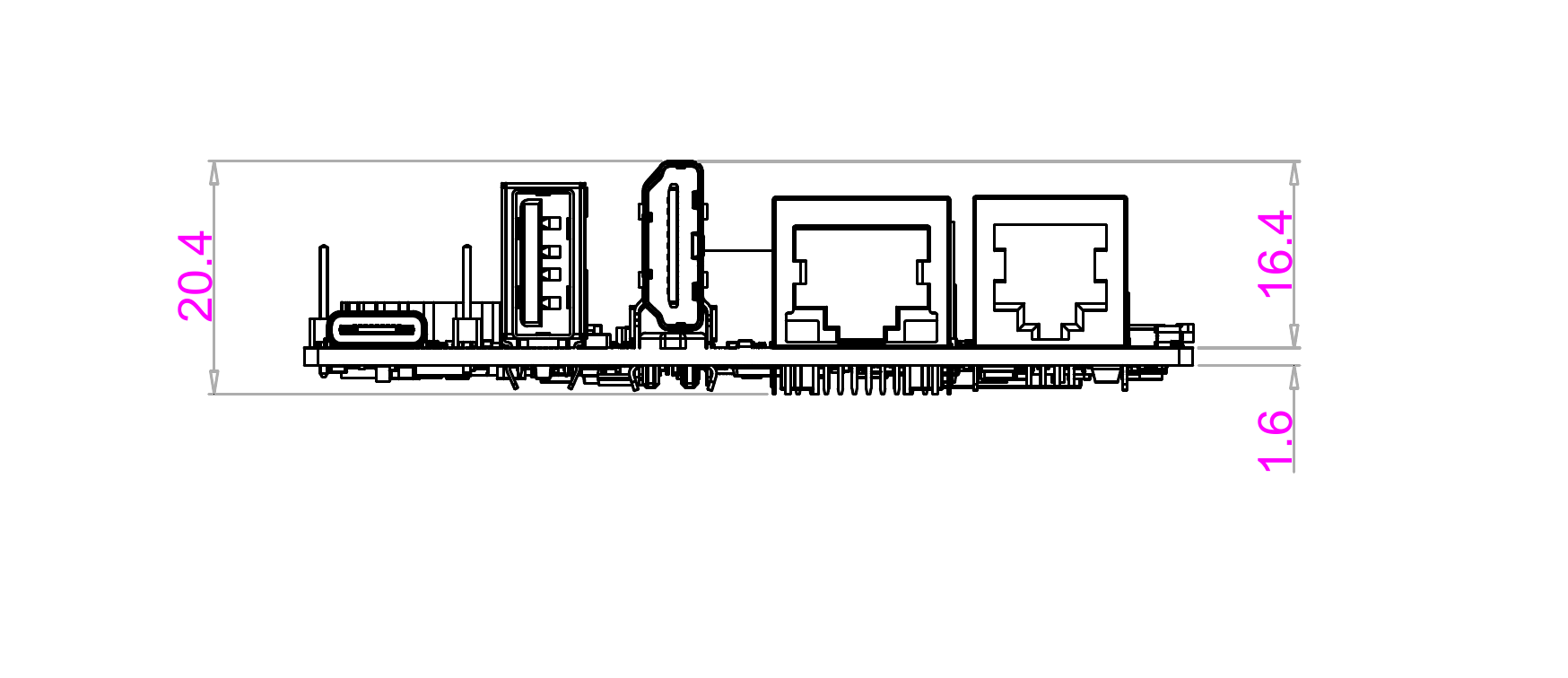Design and specifications¶
If you want to know how the BeaglePlay hardware is designed and what are it’s high-level specifications then this chapter is for you. We are going to discuss each hardware design element in detail and provide high-level device specifications in a short and crisp form as well.
Tip
You can download BeaglePlay schematic to have clear view of all the elements that makes up the BeaglePlay hardware.
Block diagram¶
The block diagram below shows all the parts that makes up your BeaglePlay board. BeaglePlay as mentioned in previous chapters is based on AM6254 SoC which is shown in the middle. Connection of other parts like power supply, memory, storage, wifi, ethernet, and others is also clearly shown in the block diagram. This block diagram shows the high level specifications of the BeaglePlay hardware and the sections below this are going to show you the individual part in more detail with schematic diagrams.
System on Chip (SoC)¶
AM62x Sitara™ Processors from Texas Instruments are Human-machine-interaction SoC with Arm® Cortex®-A53-based edge AI and full-HD dual display. AM6254 which is on your BeaglePlay board has a multi core design with Quad 64-bit Arm® Cortex®-A53 microprocessor subsystem at up to 1.4 GHz, Single-core Arm® Cortex®-M4F MCU at up to 400MHz, and Dedicated Device/Power Manager. Talking about the multimedia capabilities of the processor you can connect upto two display monitors with 1920x1080 @ 60fps each, additionally there is a OLDI/LVDS (4 lanes - 2x) and 24-bit RGB parallel interface for connecting external display panels. One 4 Lane CSI camera interface is also available which has support for 1,2,3 or 4 data lane mode up to 2.5Gbps speed. The list of features is very long and if you are interested to know more about the AM62x SoC you may take a look at AM62x Sitara™ Processors datasheet.
Fig. 19 AM6254 SoC block diagram¶
Power management¶
Different parts of the board requires different voltages to operate and to fulfill requirements of all the chips on BeaglePlay we have Low Drop Out (LDO) voltage regulators for fixed voltage output and Power Management Integrated Circuit (PMIC) that interface with SoC to generate software programable voltages. 2 x LDOs and 1 x PMIC used on BeaglePlay are shown below.
TLV75801 - LDO¶
Fig. 20 TLV75801PDBVR LDO schematic for 1V0 output¶
TLV62595 - LDO¶
Fig. 21 TLV62595DMQR LDO schematic for 3V3 output¶
TPS65219 - PMIC¶
Fig. 22 TPS65219 Power Management Integrated Circuit (PMIC) schematic¶
General connectivity and expansion¶
One of the main advantage of using a Single Board Computer (SBC) is having direct accessibility of
general purpose input & output (GPIO) pins and other interfaces like I2C, SPI, ADC, PWM. Your BeaglePlay
board shines in this domain as well with mikroBUS connector that can take 1000s of click board from
MikroElektronika, Grove connector allows to connect hundereds of Grove modules
from Seeed Studio, and QWIIC connector allows to connect I2C modules
like QWIIC modules from spartkfun or STEMMA QT modules from Adafruit. Not only that you also get one USB-A port
and one USB-C port. BeaglePlay’s USB-A port with host support so that you can connect any USB device
like your keyboard & mouse combo, USB-C connector allows to power the board and to connect the board to
a PC to connect via SSH & use pre-installed and actively running VisualStudio Code at 192.168.7.2:3000.
USB A & USB C¶
Fig. 23 USB-A and USB-C¶
ADC102S051 - 2ch 10bit ADC¶
Fig. 24 ADC102S051 - 12bit Aanalog to Digital Converter (ADC)¶
mikroBUS¶
Fig. 25 mikroBUS connector schematic¶
Grove¶
Fig. 26 Grove connector schematic¶
Qwiic¶
Fig. 27 QWIIC connnector for I2C modules¶
Wired and wireless connectivity¶
Gigabit ethernet¶
Fig. 29 Gigabit ethernet¶
Single pair ethernet¶
Fig. 30 Single pair ethernet¶
WL1807MOD - WiFi 2.4G/5G¶
Fig. 31 WL1807MOD dual-band (2.4G/5G) WiFi¶
CC1352P7 - BLE & SubGHz¶
Fig. 32 CC1352P7 Bluetooth Low Energy (BLW) and SubGHz connectivity¶
Memory, Media and Data storage¶
DDR4¶
Fig. 33 DDR4 Memory¶
eMMC/SD¶
Fig. 34 eMMC/SD storage¶
microSD Card¶
Fig. 35 microSD Card storage slot¶
Board EEPROM¶
Fig. 36 Board EEPROM ID¶
Multimedia I/O¶
HDMI¶
Fig. 37 HDMI output¶
OLDI¶
Fig. 38 OLDI display interface¶
CSI¶
Fig. 39 CSI camera interface¶
RTC & Debug¶
RTC¶
Fig. 40 Real Time Clock (RTC)¶
UART Debug port¶
Fig. 41 UART debug port¶
AM62x JTAG & TagConnect¶
Fig. 42 AM62 JTAG debug port and TagConnect interface¶
CC1352 JTAG & TagConnect¶
Fig. 43 CC1352 JTAG debug port and TagConnect interface¶
Mechanical Specifications¶
Dimensions & weight¶
Parameter |
Value |
|---|---|
Size |
82.5x80x20mm |
Max heigh |
20mm |
PCB Size |
80x80mm |
PCB Layers |
8 layers |
PCB Thickness |
1.6mm |
RoHS compliant |
Yes |
Weight |
55.3g |

Fig. 44 BeaglePlay board dimensions¶

Fig. 45 BeaglePlay board side dimensions¶